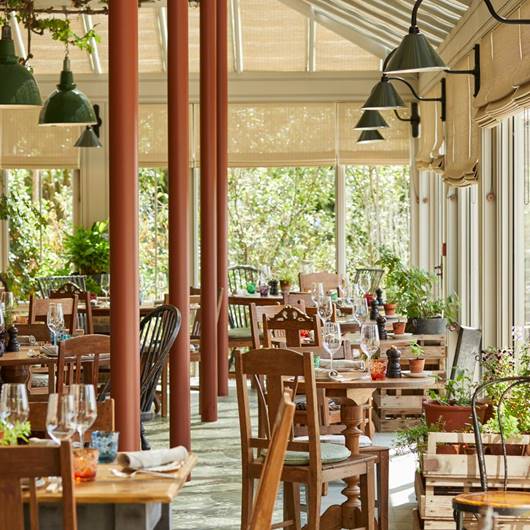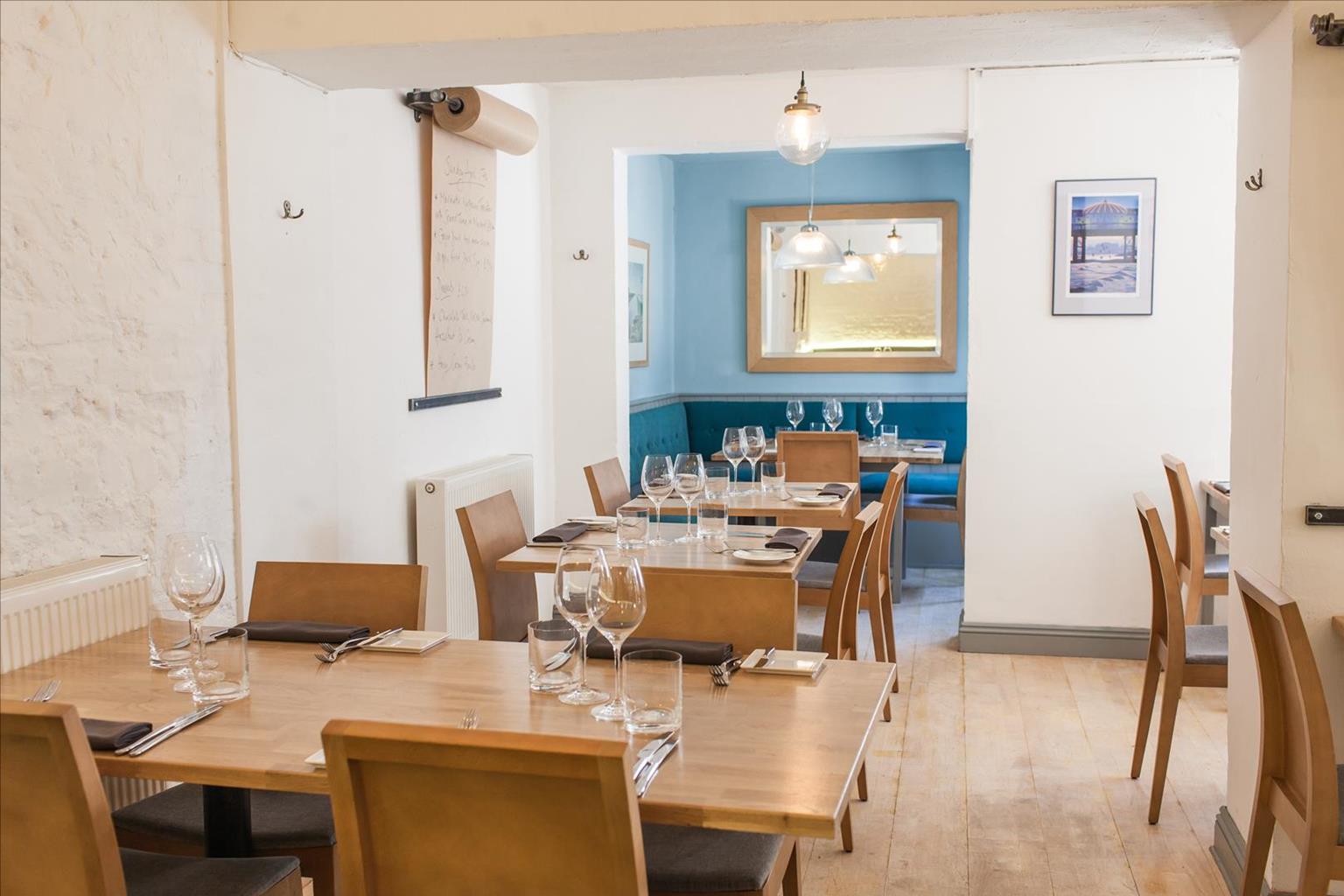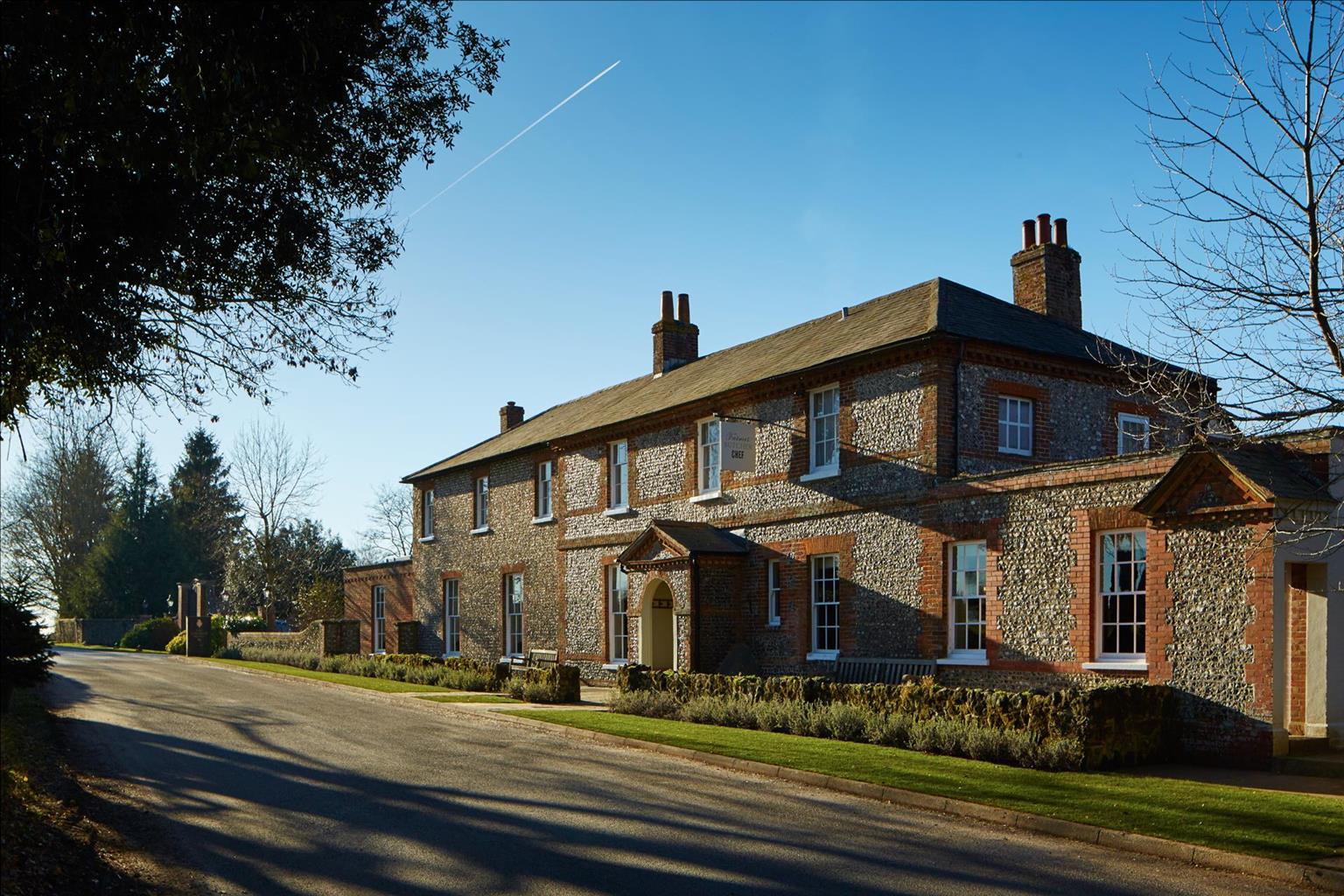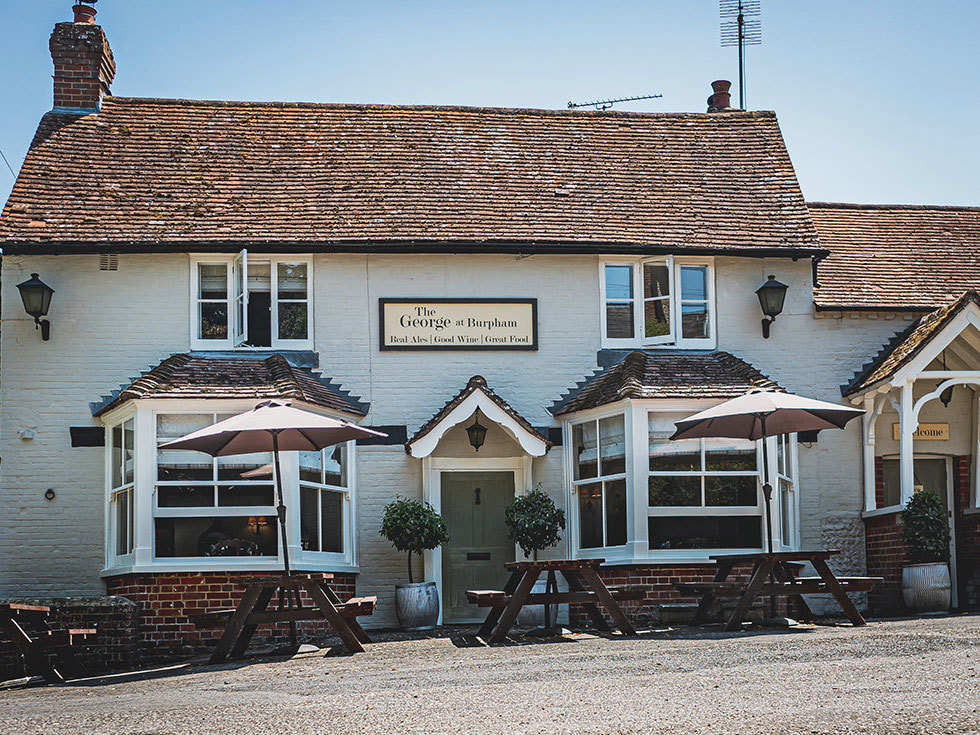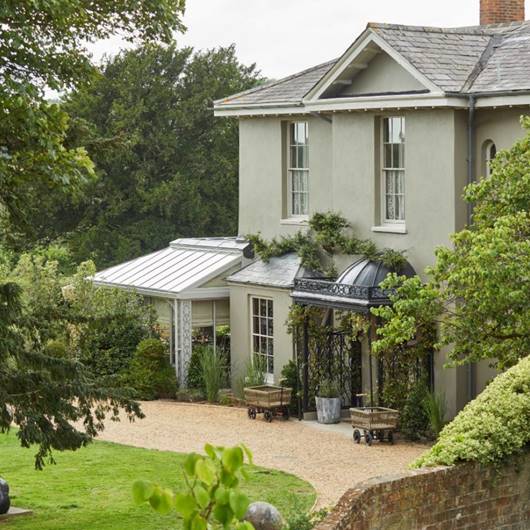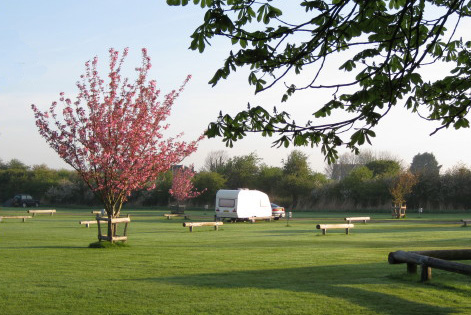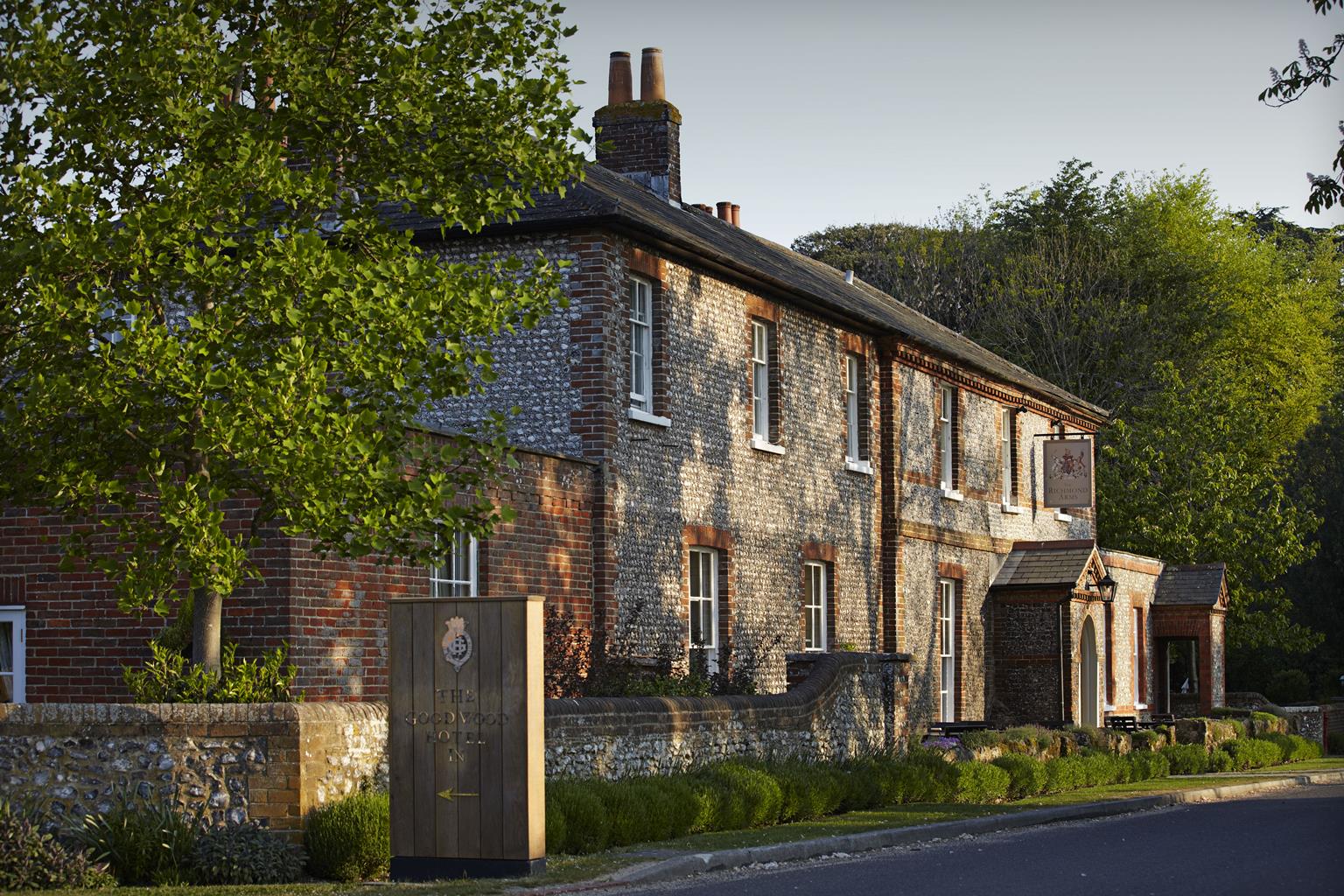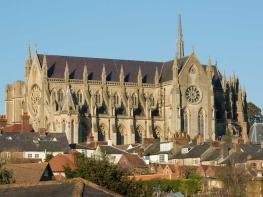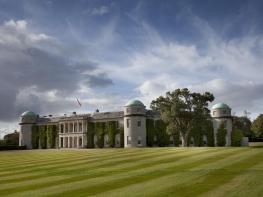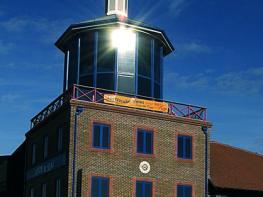Located in a rural area within easy reach of the town centre, THE PIG in the South Downs is a…
Exploring the Slindon Estate

Tour and explore a sprawling National Trust estate on this glorious woodland walk which offers fine views of Sussex.
5.5 miles (8.9kms)
About the walk
It all began in 1895, the year the National Trust was founded by three visionary Victorians whose objective was to acquire sites of historic interest and natural beauty for the benefit of the nation. Nearly 130 years after its foundation, it is now the country’s biggest landowner, depending on donations and legacies and the annual subscriptions of its two million members for much of its income. Over the years it has acquired 610,000 acres (247,000ha) of countryside, much of which is freely open to everyone, 775 miles (1,247km) of coastline, over 500 historic buildings and more than 200 gardens, all of which it aims to preserve and protect for future generations.
Much of the West Sussex village of Slindon is part of the National Trust’s 3,500-acre (1,419ha) Slindon Estate, which is situated on the southern slopes of the South Downs between Arundel and Chichester. The estate was originally designed and developed as an integrated community and the Trust aims to maintain this structure as far as possible. Take a stroll through Slindon village as you end the walk and you can see that many of the cottages are built of brick and flint, materials typical of chalk country. During the medieval period, long before the National Trust was established, Slindon was an important estate of the Archbishops of Canterbury. Even earlier than this it was home to Neolithic people who settled at Barkhale, a hilltop site at its northern end.
As well as the village, the estate consists of a large expanse of sweeping downland dissected by dry valleys, a folly, several farms and a stretch of Roman road. Parts of the estate were damaged in the storms of 1987 and 1990, though the woods are regenerating. Typical ground plants include bluebell, dog’s mercury, greater butterfly orchid and wood sedge.
To help celebrate its centenary in 1995, the National Trust chose the Slindon Estate to launch its 100 Paths Project, a scheme designed to enhance access to its countryside properties by creating or improving paths. This glorious, unspoiled landscape offers many miles of footpaths and bridleways, making it an excellent choice for a country walk.
Walk directions
From the car park walk towards the road and turn right, passing through the gate to join a wide straight path cutting between trees and bracken. The path runs alongside sunny glades and clearings and between lines of attractive beech and silver birch trees before reaching a crossroads.
Turn right to a second crossroads and continue ahead here, keeping the grassy bank and ditch (all that remains of the Park Pale), on your right. Follow the broad path as it begins a wide curve around to the right. The boundary ditch is still visible here, running parallel to the path you are on. On reaching a kissing gate, continue ahead, soon skirting fields. As you approach the entrance to Slindon campsite, swing left and follow the track down to the road.
Turn left and follow the road through the woodland. Pass Slindon Bottom Road and turn right after a few paces to join a bridleway. Follow the path as it cuts between fields.
Ignore a footpath to the left signed ‘Eartham 3/4m’ and continue forwards. The ascent becoming slightly steeper as the path twists and turns through the wood.
Eventually the path curves to the right to round the summit of Nore Hill and begins to descend gently at a guidepost. Turn right at a T-junction shortly afterwards and then bear left at a fork past a barrier and along a straight track. This eventually turns sharp left and swings right to leave the woods and provide glorious views of the estate. Pass Nore Folly on your right and follow the track as it turns left and right and begins to descend.
Continue straight ahead along the track, following it gently down. Pass Courthill Farm on the left and turn right at the road. Follow the lane, or soon branch left on to a parallel woodland path to the next road. Bear left and pass Slindon College on the right and St Richard’s Catholic Church on the left before reaching Church Hill.
Fork right into Church Hill, pass the church and make for the pond, a familiar weeping willow reaching down to the water’s edge. Look for mallard ducks here. Turn right around the far end of the pond on the obvious waterside path to enter the wood. On reaching a fork, by a National Trust sign for the Slindon Estate, keep left and walk ahead through the trees, ignoring any side paths, to return to the car park.
Additional information
Woodland, downland paths and tracks
Sweeping downland and woodland
Dogs under close control on Slindon Estate and in Slindon village
OS Explorer OL10 Arundel & Pulborough
National Trust car park in Park Lane, Slindon
None on route
WALKING IN SAFETY
Read our tips to look after yourself and the environment when following this walk.
Find out more
Also in the area
About the area
Discover West Sussex
Divided from East Sussex back in 1888, West Sussex is so typically English that to walk through its landscape will feel like a walk through the whole country. Within its boundaries lies a wide variety of landscape and coastal scenery, but it is the spacious and open South Downs with which the county is most closely associated.
In terms of walking, you’ll be spoilt for choice. Studying the map reveals a multitude of routes – many of them to be found within the boundaries of the South Downs National Park – and an assortment of scenic long-distance trails leading towards distant horizons; all of them offer a perfect way to get to the heart of ‘Sussex by the sea,’ as it has long been known. If you enjoy cycling with the salty tang of the sea for company, try the ride between Chichester and West Wittering. You can vary the return journey by taking the Itchenor ferry to Bosham.
West Sussex is renowned for its many pretty towns, of course. Notably, there is Arundel, littered with period buildings and dominated by the castle, the family home of the Duke of Norfolk, that dates back nearly 1,000 years.
Nearby stays
Restaurants and Pubs
Nearby experiences
Recommended things to do
Why choose Rated Trips?
Your trusted guide to rated places across the UK
The best coverage
Discover more than 15,000 professionally rated places to stay, eat and visit from across the UK and Ireland.
Quality assured
Choose a place to stay safe in the knowledge that it has been expertly assessed by trained assessors.
Plan your next trip
Search by location or the type of place you're visiting to find your next ideal holiday experience.
Travel inspiration
Read our articles, city guides and recommended things to do for inspiration. We're here to help you explore the UK.

